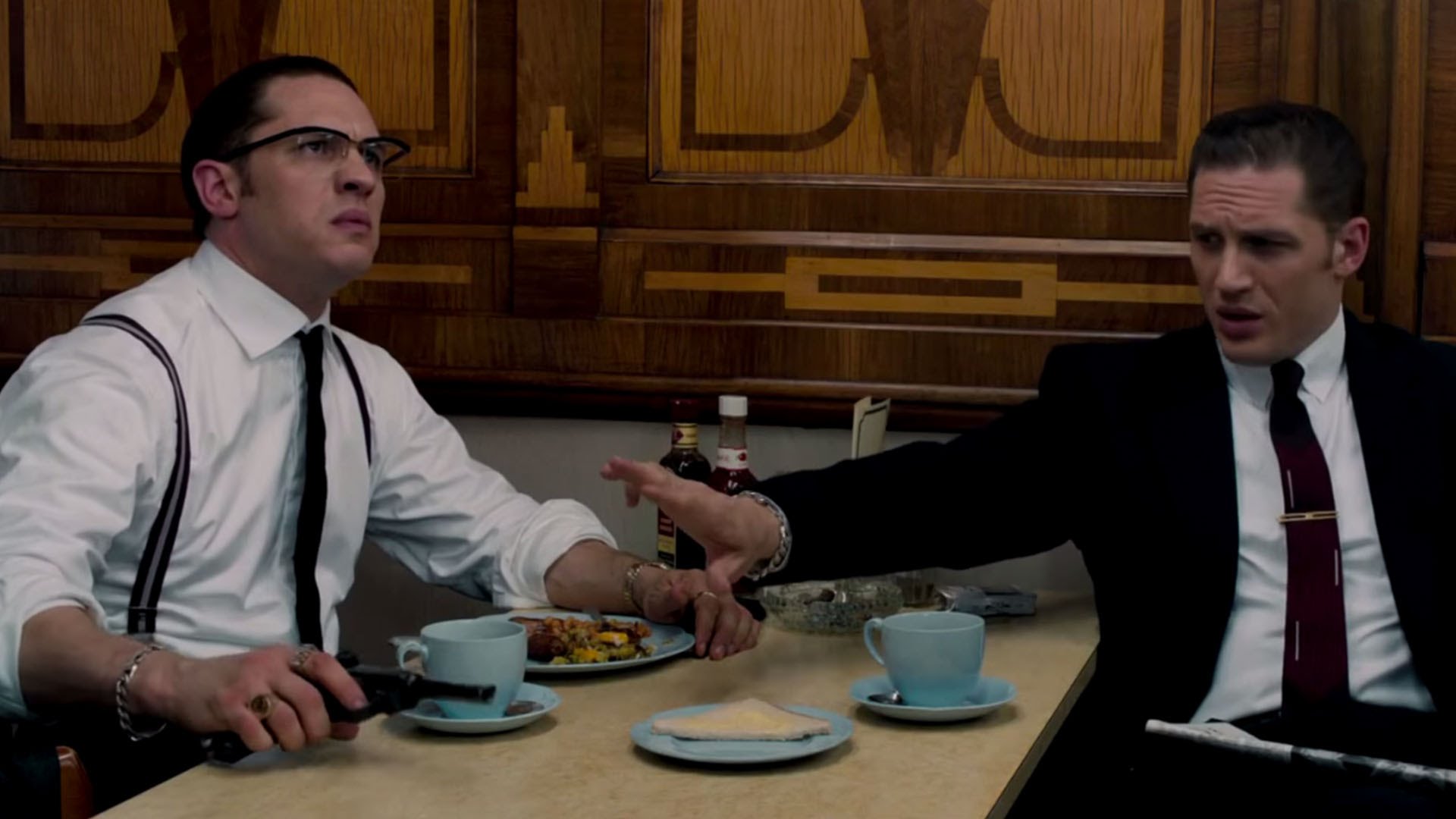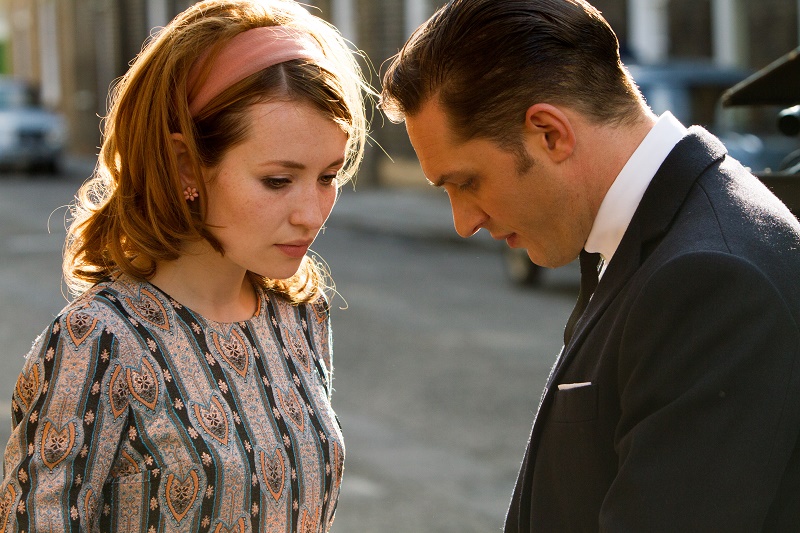How did Tom Hardy approach playing both Kray brothers in “Legend”?
Academy Award-winner Brian Helgeland, writer and director of Legend (2015), has a strong resume under his belt. He’s written the likes of L.A. Confidential (1997) and Mystic River (2003), and shared writing and directing duties for Payback (1999) and 42 (2013). When he decided to undertake the story of Reggie and Ronnie Kray, the notorious London gangsters prominent in the 1950s and 1960s, he initially wanted actor Tom Hardy for the role of Reggie. As Hardy recalled to ShortList, “I was like, ‘Well, I feel Ronnie,’ so which actor am I gonna give up Ronnie to, if I play Reggie? I can’t have that. ’Cos that’s all the fun there! And Reggie’s so straight! But there was a moment when I could have come away just playing Reggie. We could have gone and found a superlative character actor to play Ronnie, and that would have been the best of everything.”
He told Herts & Essex Observer, “I find straight leads really quite complicated, because they don’t do anything. Things happen to them and they respond to the environment. It’s quite ‘plod, plod, plod’ and kinda boring. It’s very easy to play Ronnie because there’s an unpredictability to him, so my brain can start to respond in a dramatic environment to that type of mechanism.”
Sensing the tone of his actor’s desires, Helgeland came to a compromise: Hardy would play both brothers. The idea of an actor splitting top billing is nothing new—we’ve seen Sam Rockwell interact with himself in Moon (2009), Jeremy Irons doing it in Dead Ringers (1988), all the way back to Hayley Mills playing her own twin in The Parent Trap (1961). But it’s the execution of a double-duty performance that can make or break a film.

Hardy says the believability of a dual performance is a “technical minefield: can you authentically create two characters within a piece at all? So that the audience can look past that and engage in the film? It is what it is: it’s two characters played by the same actor. But I think we got to a point where people forget that and are genuinely watching the story.”
That is the chief goal of any double performance—convincing the audience of both characters’ individual authenticity to the point where the duplicate actor is forgotten. Part of it comes from delivering a commendable performance as each unique person, and part is the editing and camerawork necessary to render the trick in a believable way. Legend contains plenty of scenes where one of the Kray brothers is seen from behind (with Hardy’s stunt double Jacob Tomuri as the rear-view stand-in), but often both brothers’ faces are seen on-screen at once. This is where the magic of movie-making is necessary to create a natural-looking effect.
Hardy and Helgeland also had to consider how to approach the subject of the Krays. The men were, in short, terrible people, and the subject needs to be approached in a way that doesn’t glamorize or beautify their inhuman criminal actions. To achieve this, much of Legend focuses on Reggie Kray’s tumultuous relationship with his wife Frances (Emily Browning). Many critics have deemed this angle the film’s greatest weakness due to its thinly-conceived portrayal of the woman and a lack of momentum in her declining mental state, but the intent was to provide a deplorable emotional context for the behavior of the brothers.

“That’s the dynamic we focused on, that space, which hasn’t been seen before. What was that dynamic like? I don’t know if we came anywhere near the truth, because we weren’t there. But that was the playing field, if you like: Frances Shea, future ahead of her, caught up in something, and no one with her, the suicide. That sits with me in a way as the lead. She’s who we forgot. Ronnie, Reggie, they’ve done their bit. Frances was forgotten. And that kind of all ties it together for me,” Hardy says.
Hardy’s performance as the Krays marks the second time the brothers have been portrayed on film, the first being Peter Medak’s The Krays (1990) starring non-twin Spandau Ballet musicians Gary and Martin Kemp as the titular roles.

